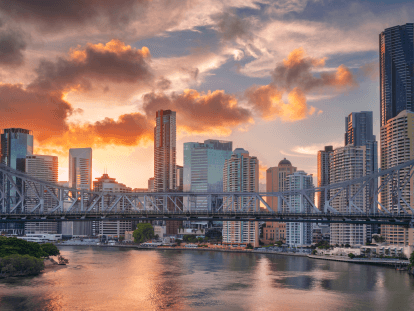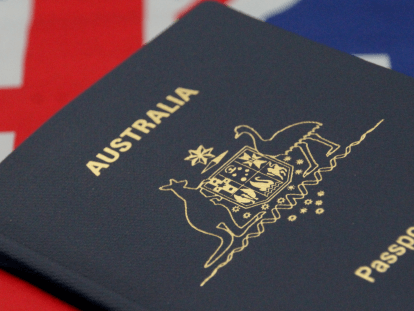Work and Holiday visa or a Working Holiday visa to PR

If you hold a Work and Holiday Visa (SC 462) or a Working Holiday Visa (SC 417) and wish to transition to permanent residency in Australia, this blog is for you. As a holder of any of the above 2 visas, you have 4 avenues of getting PR in Australia.
This blog will explore all the three avenues of obtaining PR while on SC 462 visa or SC 417 visa.
1. Skilled migration pathway
Skilled migration is a pathway that is very popular among the migrant population in Australia. However, this is a pathway that is prone to many changes depending on the Australian government in power. It also to b noted that different states have different eligibility criteria. There is also a set number of nominations that are allocated to each states for each skilled migration visas. The skilled migration visas are
If you are currently on a SC 462 or SC 417 visa in Australia and looking for permanent residency you can choose to get PR thorough the skilled migration pathway.
Step 1- Assess your points
The Australian skilled migration program utilizes a points system to evaluate and rank visa applicants based on a number of criteria that indicate their potential to contribute to the Australian economy and society.
The current points test awards points based on the following:
-
Age
-
English Proficiency
-
Work Experience
-
Educational Qualifications
-
Specialist Educational Qualifications
-
Australian Study Requirement
-
Completion of a Professional Year Program
-
Credentialled Community Language
-
Regional Study
-
Partner Skills
You are expected to score at least 65 points in order to make you eligible to apply for the skilled migration visas. If you don't have sufficient points you can work towards rectifying those shortcomings.
For example if you don't have English proficiency you can undertake an examination like IELTS, PTE or any similar tests to demonstrate your English language proficiency.
If you don't have the appropriate qualifications you can enroll yourself in a course that would lead you to PR. You will have to apply for a student visa if you want to study a course to enhance your points score. After your student visa you can apply for a post study work visa which is the Temporary Graduate visa (SC 485). This will give you rights to live, work and study in Australia. The stay duration of the visa will depend on the course of study that you undertook. While you are on this visa you can also acquire the relevant work experience and apply for skilled migration visas or any other visas that would lead you to PR.
Step 2- Skilled occupation list
An important component for skilled migration is your occupation. The occupation that you hold must be an occupation that Australia needs. Australian government has set out 3 skilled occupation lists to identify the skills or occupations that are in demand in Australia, They are the
-
Medium and Long Term Strategic Skills List (MLTSSL)
-
Short Term Occupation Skills List (STOSL)
-
Regional Occupation List (ROL)
The main differences between the different skilled occupation lists are based on the types of visas that you can apply to based on what list you can find your occupation in. It is also to be noted that certain states can have separate skilled occupation lists. These state specific occupation lists are occupations from the above lists that are particularly in demand in those states.
Step 3-Skill Assessment
A skill assessment is conducted in order to have an individual’s qualifications and skills assessed to determine whether those qualifications and skills can be evaluated as meeting the Australian standard for a work in the skilled occupation list.
There are a variety of skill assessing bodies that have been nominated to oversee the skill assessments of particular occupations, and all these skill assessing bodies have different eligibility criteria to be met by the applicant. Individuals can ascertain the assessing body relevant to their occupation using the Australian Skilled Occupation List.
Step 4- Expression of Interest
An Expression of Interest is a means through which the individual can demonstrate, to the federal government, their intention to apply for a skilled migration visa and to migrate to Australia.
The EOI utilises a points system that we discussed earlier, on which applicants are expected to score at least 65 points in order to make them eligible to apply for the skilled migration visa. The points are awarded based on the individual circumstances of the applicant.
Once the EOI has been submitted, having included all the necessary information to support the claim of points in the above categories, Individuals can then move to the next step in the process.
Step 5- Registration of interest
A Registration of Interest is a demonstration of willingness to the state government that the applicant intends to live and work in a particular state.
ROIs are not a requirement for every state but are considered mandatory in certain states. The following states require a registration of interest to be made following the expression of interest:
-
Victoria
-
Australian Capital Territory
-
Southern Australia
-
Tasmania
Each of the states have their own eligibility criteria and some can also have their own skilled occupation lists based on the industries that are in demand.
It is important to note that a ROI can only be made for one visa subclass (either the SC 190 or the SC 491) and that the applicant will only be considered for the visa subclass mentioned in the ROI.
As a result, if you wish to change the subclass you want to apply for, a new ROI will need to be submitted.
Step 6- Make an application
Once you have made your EOI and ROI, you will then need to wait until the federal government or state government issues an invitation. Some states require you to make a state nomination application once you are nominated by the state. Following this application, applicants must wait for an invitation prior enabling you to apply for a particular skilled visa.
Once the invitation is received, a visa application can be made for the applicant and the members of the family unit, if any.
2. Employer sponsored pathway
This pathway provides a higher potential for hopeful migrants to obtain PR but it is an avenue that is less explored by the student migrant population in Australia. The employer sponsored visas are:
Training visa (SC 407)
This visa is a temporary visa that allows you to undergo training in your relevant field to improve your skills and knowledge. This visa can be granted for a maximum duration of 2 years. This visa permits you to include eligible family members. However, the duration that they can work while on this visa is capped at 40 hours per fortnight. After gaining at least 2 years of work experience while you are on this visa, you can gradually move into the SC 482 visa.
Skills in Demand visa (SC 482)
The SC 482 visa is a temporary visa that allows Australian employers to sponsor skilled workers to fill a position which cannot be filled by a skilled Australian. This visa also allows applicants to include eligible family members in the application to accompany them while they are on the SC 482 visa. While you are on this visa, you can prepare yourself for permanent residency visas by obtaining the relevant work experience. If you are a migrant who already has 1 year of work experience, you can apply for this visa bypassing the SC 407.
Employer nomination scheme pathway (SC 186)
This visa lets skilled workers, who have an occupation in the relevant skilled occupation list and are nominated by an employer to live and work in Australia permanently. You can include eligible family members to your visa application. This is a PR visa and your last employer-sponsored visa in your journey to PR in Australia. If you are a migrant who has 3 years of work experience then you can bypass the SC 407 and SC 482 and apply for this visa directly.
Skilled Employer Sponsored Regional (Provisional) visa (SC 494)
This visa allows employers who are based in designated regional areas to sponsor employees to work in their businesses. This visa allows skilled individuals to live and work in Australia for up to 5 years. You can apply for Permanent residency after 3 years of holding the visa through the SC 191 - Permanent Residence (Skilled Regional) visa. This visa has two streams that you can apply to.
-
If you don't have the qualifications for the employer sponsored pathway, you can apply for a student visa to obtain the necessary qualifications. The student visa is granted up to 5 years depending on the course that you are applying.
-
After the completion of your studies, if you are under 35 years of age you can apply for the Temporary Graduate visa SC 485. This is a post study work visa which gives you rights to work in Australia for a certain amount of time depending on the studies that you undertook.
-
While you hold your 485 visa or just after the completion of your studies you can explore the skilled migration pathway or the employer sponsored pathway to get your PR in Australia.
3. Partner visa pathway
Apart from pathways led by the qualifications and work experience the partner visa pathway is also an option to continue your stay in Australia. If your spouse or partner isa an Australian citizen or an Australian permanent resident, then you can apply for a partner visa. The partner visas are:
Step 1- Partner Visa (Temporary) SC 820
The SC 820 visa is a temporary partner visa designed for spouses and de facto partners who are already in Australia and wish to live with their Australian partner. Once granted, this temporary visa allows spouses and de facto partners to reside in Australia while awaiting the outcome of their subsequent application for the permanent partner visa (SC 801). It's an important step in the two-stage process toward obtaining permanent residency in Australia for eligible applicants.
Step 2- Partner Visa (Permanent) SC 801
The SC 801 visa is a permanent partner visa that spouses and de facto partners can apply for after fulfilling the initial 2-year period on the temporary SC 820 visa. It represents the second stage in the two-step process towards obtaining permanent residency in Australia. It's important to note that applicants should have been on the SC 820 visa for at least two years before becoming eligible for the SC 801.
Latest Insights

Australian permanent residency pathways
Department of Home Affairs contact number
